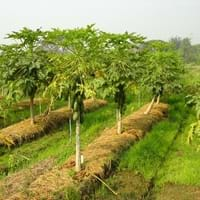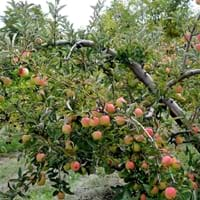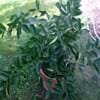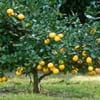Life Span
Annual and Perennial
Perennial
Origin
Mexico, Central America
Eastern Europe, Southern Europe, Russia/Siberia, Southern Asia, Western Asia
Types
Male Papaya Tree, Female Papaya Tree, hermaphrodite Tree
fuji, jonathan apple
Habitat
tropical environments, Tropical regions
Cold Regions, gardens
USDA Hardiness Zone
10-15
3-8
Sunset Zone
H1, H2, 21, 23, 24
1a, 1b, 2a, 2b, 3a, 3b, 6, 7, 14, 15, 16
Habit
Upright/Erect
Oval or Rounded
Flower Color
Ivory
White, Pink
Flower Color Modifier
Bicolor
Bicolor
Fruit Color
Green, Orange, Light Yellow
Red, Yellow green
Leaf Color in Spring
Dark Green
Green
Leaf Color in Summer
Dark Green
Green
Leaf Color in Fall
Dark Green
Green, Light Yellow, Brown
Leaf Color in Winter
Light Green
Light Green
Leaf Shape
Irregular
Oval Cordate
Plant Season
Spring, Summer, Fall, Winter
Spring, Fall
Sunlight
Full Sun, Partial Sun, Partial shade
Full Sun, Partial Sun, Partial shade
Growth Rate
Very Fast
Medium
Type of Soil
Loam, Sand, Well drained
Clay, Loam, Sand
The pH of Soil
Acidic, Neutral
Acidic, Neutral
Soil Drainage
Well drained
Well drained
Bloom Time
Indeterminate
Early Spring, Spring
Tolerances
Drought
Drought
Where to Plant?
Ground
Ground
How to Plant?
Seedlings
Grafting, Seedlings, Stem Planting
Plant Maintenance
Medium
Medium
Watering Requirements
Average Water Needs, Do Not over Water, Do not water frequently, Requires watering in the growing season
Do not water frequently
In Summer
Lots of watering
Lots of watering
In Spring
Moderate
Moderate
In Winter
Average Water
Average Water
Soil pH
Acidic, Neutral
Acidic, Neutral
Soil Type
Loam, Sand
Clay, Loam, Sand
Soil Drainage Capacity
Well drained
Well drained
Sun Exposure
Full Sun, Partial Sun, Partial shade
Full Sun, Partial Sun, Partial shade
Pruning
Remove damaged leaves, Remove dead branches, Remove dead leaves, Remove shoots, Remove short branches, Remove short twigs, Requires little pruning
Prune central stem, Remove lateral branches
Fertilizers
14-14-14 Fertilizer
Apply 10-10-10 amount, fertilize in growing season, Fertilize the soil before planting
Pests and Diseases
Red blotch
Bacterial Blight, Bacterial Canker, Leaf rust, Red blotch, Ring Rot, Woodpecker feeding
Plant Tolerance
Drought
Drought
Flower Petal Number
Single
Single
Foliage Texture
Bold
Medium
Foliage Sheen
Glossy
Matte
Attracts
Ants, Bees, Hummingbirds
Bees, Butterflies, Hummingbirds, Insects
Allergy
Asthma, breathing problems, Itchiness, Itchy eyes, Red eyes, Runny nose, sneezing, Sore eyes, Swelling, Watery eyes, wheezing
Peripheral Edema, Vomiting
Aesthetic Uses
Not Used For Aesthetic Purpose
Cottage Garden, Showy Purposes
Beauty Benefits
Good for skin, Good for skin and hair, Improve hair condition, Making cosmetics, Not Available
Acne, For treating wrinkles, Improve skin tone, Moisturizing, Stops hair loss
Environmental Uses
Air purification
Food for animals, Shadow Tree, soil stabilisation, Windbreak
Medicinal Uses
Asthma, Bone strength, Cancer, Diabetes, Digestion problems, Heart problems, Inflammation, Skin Disorders
Acne, Alzheimer’s Disease, Anemia, constipation, Gastrointestinal disorders, Hair Loss, Parkinson
Part of Plant Used
Fruits, Seeds
Fruits
Other Uses
Cosmetics, Making Shampoo, Used As Food, Used for its medicinal properties
Acts as a natural source of rain water for birds and insects., Cosmetics, Used As Food
Used As Indoor Plant
No
No
Used As Outdoor Plant
Yes
Yes
Garden Design
Container, Edible, Feature Plant, Fruit / Fruit Tree, Tropical
Edible, Fruit / Fruit Tree
Botanical Name
CARICA papaya
MALUS domestica 'Northern Spy'
Common Name
Papaya
Apple, Cider Apple, Cooking Apple, Eating Apple, Northern Spy Apple
In Hindi
पपीता
Northern Spy Apple
In German
Papaya
Northern Spy Apfel
In French
Papaye
Northern Spy Pomme
In Spanish
Papaya
Espía del Norte de Apple
In Greek
Παπάγια
Βόρεια κατάσκοπος της Apple
In Portuguese
Mamão
Northern Spy a Apple
In Polish
Papaja
Northern Spy Jabłko
In Latin
Papaya
Northern Spy Apple
Phylum
Magnoliophyta
Magnoliophyta
Class
Magnoliopsida
Magnoliopsida
Order
Brassicales
Rosales
Family
Caricaceae
Rosaceae
Clade
Angiosperms, Eudicots, Rosids
Dicotyledonous, Rosids
Tribe
Not Available
Not Available
Subfamily
Not Available
Not Available
Number of Species
Not Available
Not Available
Properties of Papaya and Northern Spy Apple
Wondering what are the properties of Papaya and Northern Spy Apple? We provide you with everything About Papaya and Northern Spy Apple. Papaya doesn't have thorns and Northern Spy Apple doesn't have thorns. Also Papaya does not have fragrant flowers. Papaya has allergic reactions like Asthma, breathing problems, Itchiness, Itchy eyes, Red eyes, Runny nose, sneezing, Sore eyes, Swelling, Watery eyes and wheezing and Northern Spy Apple has allergic reactions like Asthma, breathing problems, Itchiness, Itchy eyes, Red eyes, Runny nose, sneezing, Sore eyes, Swelling, Watery eyes and wheezing. Compare all the properties and characteristics of these two plants. Find out which of these plant can be used as indoor plant. If you are interested to decorate your house and garden, find out aesthetic uses, compare them and select the plant which will beautify your surrounding. Along with beautification, try comparing medicinal and edible uses of Papaya and Northern Spy Apple and you can choose the plant having best and most benefits.
Season and Care of Papaya and Northern Spy Apple
Season and care of Papaya and Northern Spy Apple is important to know. While considering everything about Papaya and Northern Spy Apple Care, growing season is an essential factor. Papaya season is Spring, Summer, Fall and Winter and Northern Spy Apple season is Spring, Summer, Fall and Winter. The type of soil for Papaya is Loam, Sand, Well drained and for Northern Spy Apple is Clay, Loam, Sand while the PH of soil for Papaya is Acidic, Neutral and for Northern Spy Apple is Acidic, Neutral.
Papaya and Northern Spy Apple Physical Information
Papaya and Northern Spy Apple physical information is very important for comparison. Papaya height is 457.20 cm and width 7.62 cm whereas Northern Spy Apple height is 370.00 cm and width 370.00 cm. The color specification of Papaya and Northern Spy Apple are as follows:
Papaya flower color: Ivory
Papaya leaf color: Dark Green
Northern Spy Apple flower color: White and Pink
- Northern Spy Apple leaf color: Green
Care of Papaya and Northern Spy Apple
Care of Papaya and Northern Spy Apple include pruning, fertilizers, watering etc. Papaya pruning is done Remove damaged leaves, Remove dead branches, Remove dead leaves, Remove shoots, Remove short branches, Remove short twigs and Requires little pruning and Northern Spy Apple pruning is done Prune central stem and Remove lateral branches. In summer Papaya needs Lots of watering and in winter, it needs Average Water. Whereas, in summer Northern Spy Apple needs Lots of watering and in winter, it needs Average Water.





